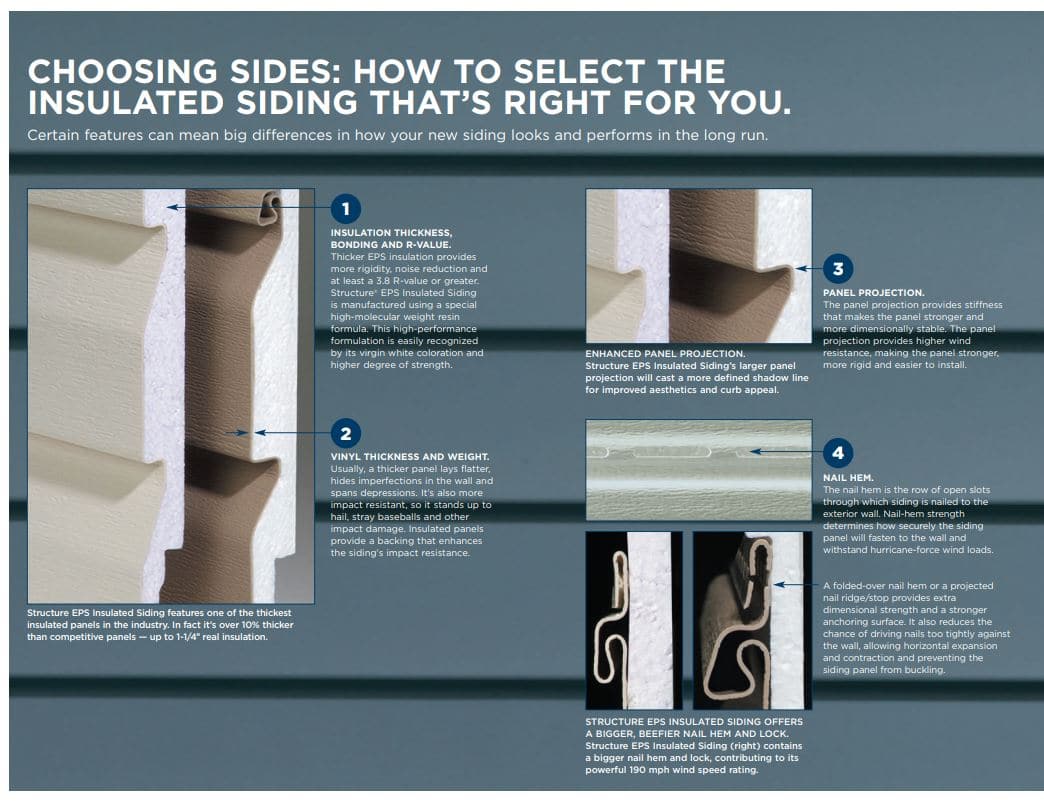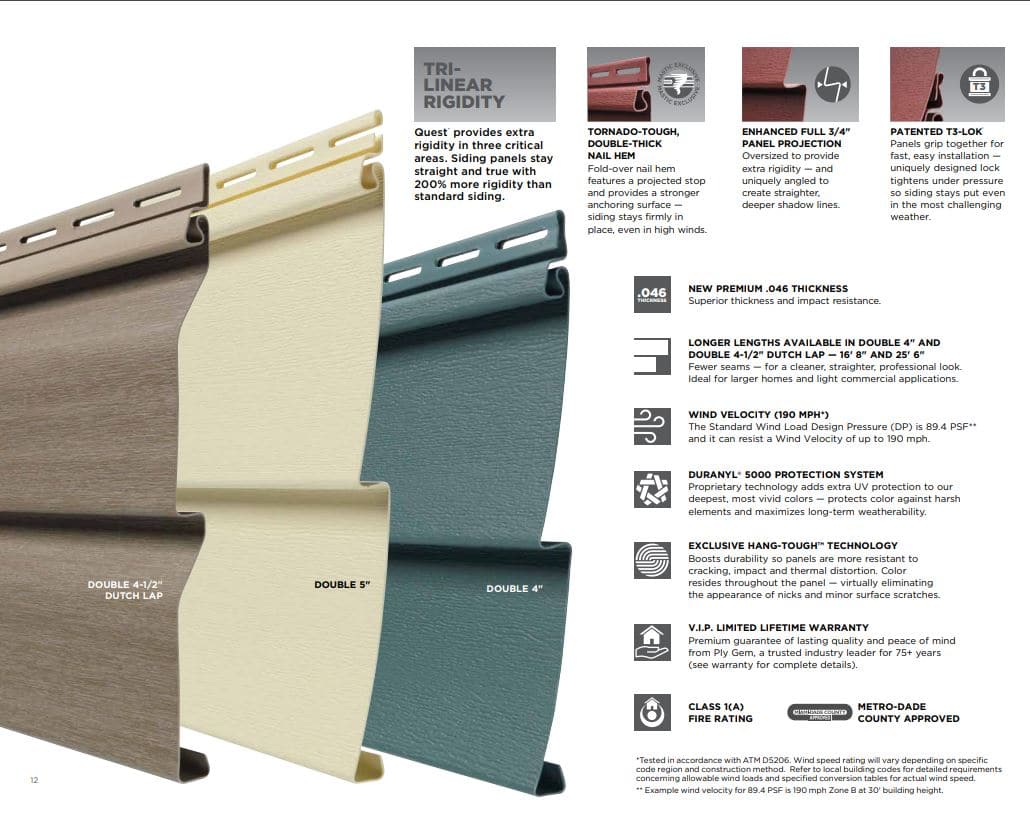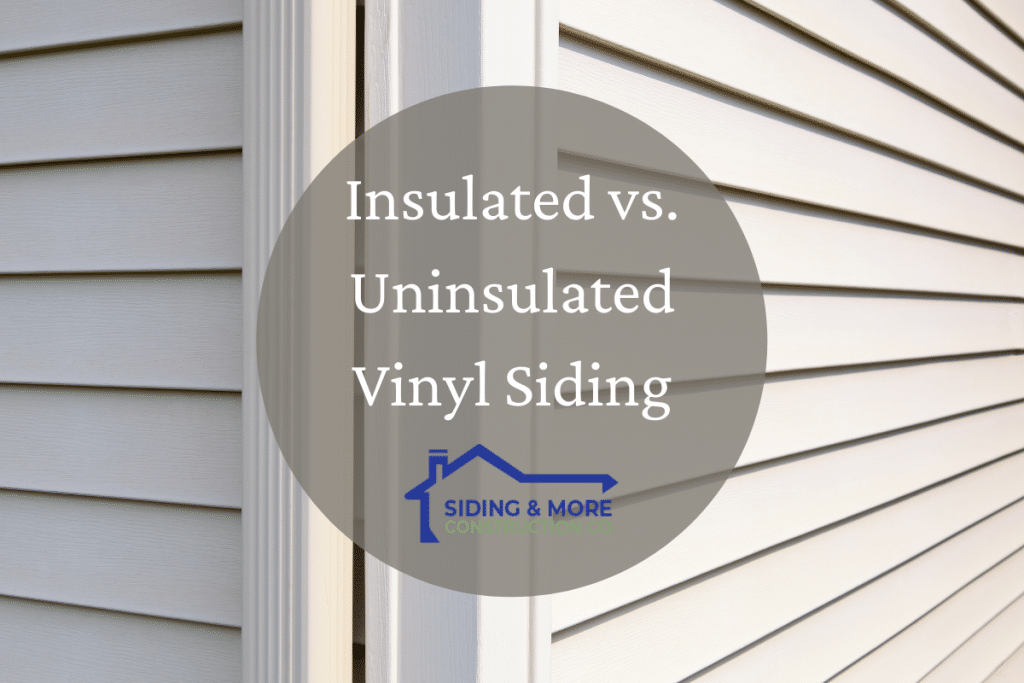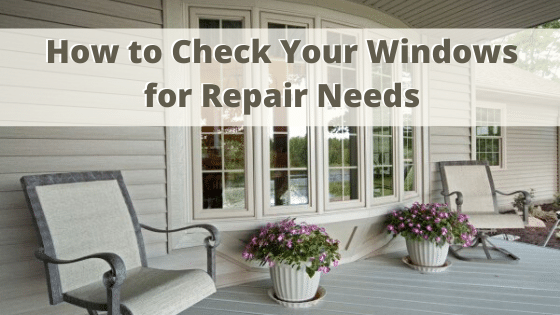While looks, the lifetime of the product, and the reputation of the siding brand all may play vital factors in your final decision for which type of vinyl siding you end up with, determining whether or not you need insulated or uninsulated vinyl siding should also play a huge role.
So what are the differences between insulated and uninsulated vinyl siding, and which one should you choose?
Why Choose Insulated Vinyl Siding?

In short, insulated vinyl siding is siding that has foam insulation on the backside of the vinyl siding panel. It is usually contoured to match the shape of the panels and offers several benefits.
It’s an energy-efficient upgrade.
Additionally, when it comes to weather conditions resistance, Mastic Structure® EPS Insulated Siding meets the Energy Star® label strict guidelines and requirements set by the U.S. Environmental Protection Agency and the U.S. Department of Energy in order to save you energy and money. That means that, when the Texas winters get tough, your home’s vinyl siding keeps the heat in and the cold out.
It’s stronger.
For instance, take our Mastic Structure® EPS Insulated Vinyl Siding as an example. When you upgrade your home’s vinyl siding to the Mastic Structure® EPS Insulated Siding, you’re not only adding an extra 1 – 1/4″ layer of insulated protection to your home’s exterior, you’re actually increasing your wall system’s R-value. An R-value is a barrier or a wall’s ability to resist the conductive flow of heat. When the R-value is higher, the ability to resist the conductive flow of heat is greater. Mastic Structure® EPS Insulated Siding increases your wall system’s R-value by up to 25%!
It offers superior moisture management.
While the Mastic Structure® EPS Insulated Siding is strong enough to keep the heat in and the cold out, it also allows water vapors to properly escape, which means that the moisture management system is meeting its goals. And, when there’s less moisture, there are fewer bugs, meaning that moisture management is also pest management.
It lasts longer.
When we discuss the structure, we back up our conversation with durability. Structure EPS Insulated Siding is built to withstand the blows of time, weather, and circumstance. “Structure EPS Insulated Siding stands up to hammer blows, with a design that is up to 300% more impact-resistant than traditional siding products.” (1)
It reduces the noise levels.
Because of the extra added layer of insulation to each panel, insulated vinyl siding automatically reduces the noise levels from the outside by an average of 30%. (1)
Why Choose Uninsulated Vinyl Siding?

It’s more cost-effective.
While insulated vinyl siding can run you between $2 and $7 per square inch, uninsulated vinyl siding usually costs, on average, between $0.70 and $5.00 per square foot. (2) It’s important to remember, however, that while traditional, uninsulated vinyl siding is more cost-effective, that should not mean that the installation process should suffer. Trying to save as much money as possible should not be at the expense of proper and professional installation. That’s why it’s important to call professionals like Siding & More Construction Company.
It’s more environmentally friendly.
Because the traditional, uninsulated option of vinyl siding (like our PlyGem Mastic® vinyl siding) requires fewer materials used during the manufacturing process than traditional brick and mortar, it’s naturally more environmentally friendly. Additionally, the PlyGem Mastic® vinyl siding is lighter in weight, making it cheaper to transport.
It’s energy-efficient.
The Structure Home Insulation System™ by PlyGem can reduce thermal bridging to meet the requirements of an ENERGY STAR® Qualified new home. This kind of siding has an R-value of 3.0, which is the same value found in most traditional wall systems. “Mastic Performance Metals® V-Groove soffit and roof and eave vents support proper attic ventilation efforts, which moderate attic temperatures and improve a home’s energy efficiency. Mastic® V-Groove metal soffit provides the most net free ventilation per linear foot of any aluminum soffit system.” (3)
Contact the Professionals
If you’re wondering whether you should choose insulated or uninsulated vinyl siding for your home vinyl siding renovation project, give us a call. We’ll help you determine which options make more sense for your home and for your family. We’re happy to speak with you and to offer you a free quote!




